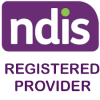Oxygen Concentrators and the NDIS
The National Disability Insurance Scheme (NDIS) is a significant initiative by the Australian Government designed to support individuals living with a disability. This includes those who require oxygen therapy due to respiratory disorders.
What is the NDIS?
The NDIS provides funding for supports and services. The scheme recognises that everyone’s needs and goals are different, and provides information and referrals, support to access community services and activities, personal plans, and funded supports.
How does the NDIS apply to oxygen concentrators?
The NDIS covers “assistive technology”, which includes equipment or systems that help individuals to live independently and efficiently. Oxygen concentrators, both portable and home-based, fall under this category as they significantly aid individuals with respiratory disabilities to maintain their daily activities and enhance their quality of life.
Eligibility
To access the NDIS for support with an oxygen concentrator, the individual’s disability must be likely to be permanent (lifelong) and impact their ability to take part in everyday activities. The NDIS will also consider if the support will help the person to:
- Pursue their goals, objectives, and aspirations
- Increase their independence
- Increase social and economic participation
- Develop their capacity to actively participate in the community
- Application Procedure
Applying for NDIS support involves creating an application that includes an overview of how your disability impacts your daily life, and the ways in which the assistive technology (oxygen concentrator) will help you achieve your goals. A functional assessment or report from a Respiratory Physician might also be required.
After Approval
Depending on whether you are self or plan managed we can assist. Funding is generally allocated under ‘Assistive Technology’.
Oxygen Concentrator parts such as filters, cannula, masks etc. may be fundable through your consumables budget.
At Oxygen West, we are committed to assisting you through this process. Our experienced team can guide you on how to apply for NDIS funding and offer advice on selecting the most suitable oxygen concentrator for your needs.
Many of our patients don’t have, or don’t have enough, funding allocated correctly for oxygen therapy equipment. This is also where we can help. We can provide written quotes that can be provided to your NDIS manager. We can assist in providing written prescriptions of your required Oxygen Concentrator and settings following review with one our friendly oxygen technicians. We will also work with your NDIS representatives to assist in any way required. We will partner and work with you through every step.
Please note: This is general advice, and the specific details of your NDIS plan and its application to oxygen concentrators may vary. For the most accurate information, please consult with your NDIS representative or visit the NDIS website.
Setting Portable Oxygen Concentrators: Understanding Pulse and Continuous Flow
At Oxygen West, we understand that managing your oxygen needs can be complex. One of the key aspects of this process involves setting your portable oxygen concentrator correctly to ensure you are receiving the appropriate oxygen dosage.
Pulse Dose vs. Continuous Flow
Portable oxygen concentrators come with two basic modes: pulse dose and continuous flow.
1. Pulse Dose:
This mode delivers oxygen in pulses or “boluses” only when the user inhales. The benefit of this setting is that it is more efficient, using oxygen only when the user takes a breath, which can prolong battery life.
2. Continuous Flow:
This mode delivers a constant stream of oxygen, irrespective of whether the user is inhaling or exhaling. While this can offer greater assurance of constant oxygen delivery, it can drain the battery more quickly.
These two settings serve different needs and are not interchangeable. It’s important to understand this distinction to ensure you’re receiving your oxygen therapy as prescribed.
Exertion Test and Oximetry
At Oxygen West, we follow the best practice guidelines set out by the Thoracic Society in setting your portable oxygen concentrator.
One of the critical steps in this process is a exertion test. This test generally involves you walking for a short period while we monitor your oxygen saturation levels using a pulse oximeter. A pulse oximeter is a small device that clips onto your finger and uses light waves to estimate how much oxygen is in your blood.
Titration and Adjusting Settings
Once we have the readings from the oximetry, we then adjust your pulse dose setting until your oxygen saturation level is satisfactory and stable. This procedure, called titration, allows us to fine-tune your oxygen concentrator setting to ensure you receive the right amount of oxygen as you engage in daily activities.
The Oxygen West Difference
Many providers may incorrectly set the pulse dose setting the same as the continuous flow setting, which is not correct nor efficient. At Oxygen West, we understand the vital difference between these settings and how they can impact your health and lifestyle.
We are dedicated to providing a service that is tailored to your unique oxygen needs. By following the best practice guidelines set out by the Thoracic Society, we ensure that you can confidently manage your oxygen therapy and live your life to the fullest.


